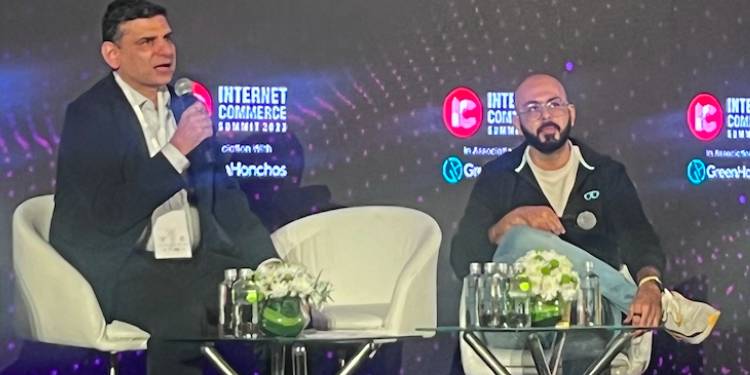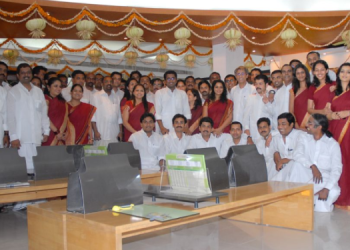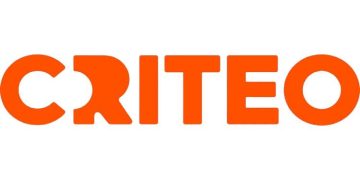In conversation with Ashish Dhir, Executive VP, 1Lattice at the Internet Commerce Summit 2023 in Bengaluru on December 12, Ramneek Khurana, Co-founder, Lenskart spoke about how the eyewear brand is enabling customer engagement across touchpoints through a robust omni-channel strategy.
Khurana said that the team at Lenskart was not aware of the word or terminology till 2015-’16.
“When investors started approaching us during that period, they said that Lenskart is an omni-channel platform. That was the first time I got to know what omni-channel is. As far as our omni-channel journey is concerned, it was very simple. We started Lenskart as an online platform because that is the easiest and most cost-effective way to figure out our journey.”
Initially the brand was doing a lot of consumer studies on people visiting the app/website but couldn’t make purchases.
“Customers were dropping off and the reasons behind that were the basic concerns they had – like they were not sure whether glasses will fit them, whether the glasses will look good on them, and the third one was how to get the glasses without a prescription. That’s when we started our omni-channel journey. We started with a few stores and they did phenomenally well. Because we were going from online to offline unlike many brands who go from offline to online, we did things which made intuitive sense to us. For example, it didn’t make sense to us that a consumer is standing in a store and they get to buy products which are present in the store and they don’t get to try or buy products which are not there.”
Another thing which didn’t make sense to the brand, according to Khurana was that if the product was brought from the store, then the consumer will not get a return or refund, and that the same process can’t be done from the comfort of their homes.
“We started building upon these concerns and these things eventually got fancy names like infinite trials, omni-channel returns etc. Thus began our omni-channel journey. We stumbled upon it, but were prompt on addressing the consumer problems,” Khurana added.
Frictionless omni-channel journey
“I think the people working on the omni-channel side have a lot to work on . Firstly we are vertically integrated. Everything from frames to lenses, all these are manufactured in-house. The supply and manufacturing software and all the software the stores are running on is a function of the scale we have reached so far,” Khurana added.
He further spoke about how omni-channel is evolving for Lenskart and what the company is working on currently.
“Firstly, AI and ML have unlocked a lot of capabilities. The very regular thing we have been able to do is to tap into a regular CCTV footage without changing any of the cameras across the stores and on top of it, put Machine Learning to get a lot of information out,” said Khurana.
Studying the conversion funnel online, the brand understands the demography of people, the time spent on choosing glasses etc. and figures how to make the journey frictionless for them, he explained.
“Once you get the clarity, what we realise is that pain points are common across. Online, people are used to buying products based on rating and review systems. That is something which doesn’t happen offline,” he observed.
The brand attempts to bring features that are typically available online into consumers’ offline journeys, added Khurana. On the other hand, once the customer visits the store and goes online, the brand tries to provide the consumers the confidence that they have experienced offline.
Omni-channel helps generate leads across consumer journeys starting from the consideration phase. An ad on TV or Instagram or even when referred by a friend, a consumer doesn’t have to make time to visit the store to know about the brand – they can immediately download the app and check on the products, said the Co-founder.
“During the journey when we realise that they have shortlisted certain products but are probably about to drop off because they don’t remember the eye test or prescription for the same. They can go to our store, get an eye check done and make the purchase. Post purchase they will be able to easily track the orders etc. and the post purchase experience is taken care of by the app. The online platform is able to send a notification on the new launches very easily,” Khurana added.
Managing data
On managing data, the spokesperson said, “While we use data in every aspect of decision making at Lenskart, we are also learning to unlock more and more data. For example, when you go to a Lenskart store, one key expectation is that there is a trained sales professional to guide you on what glasses work for you. On the other hand, most of the consumers take a selfie using the app and are able to find glasses which fit them well. We have this anonymised data of millions of purchases of people of particular face shapes who have bought different glasses over the years. Using that data we are able to recommend glasses far better than the sales assistants because they wouldn’t have seen that many purchases over years. That allows us to deploy sales assistance online and at all our stores, so that you know when you are approaching Lenskart you will get the best assistance in terms of glass recommendations.”
“We are good at collecting data, but are unlocking use cases one by one,” he surmised.

















